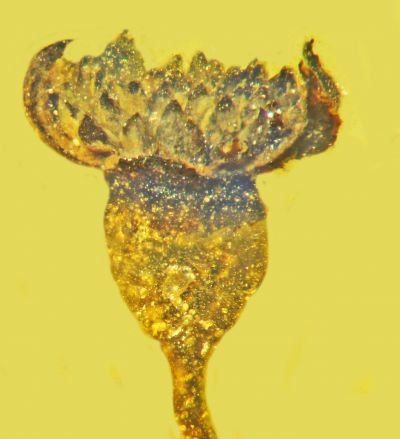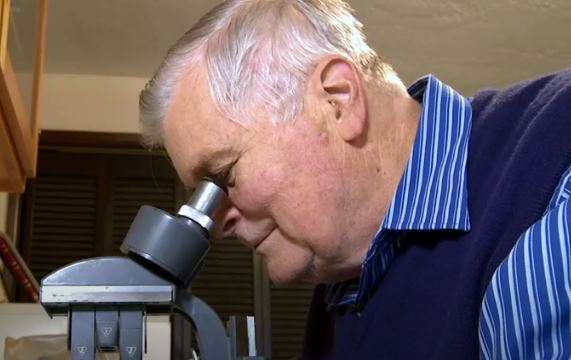Over the years, fossilized tree resin, which is known as amber, has revealed several ancient mysteries and offered scientists extraordinary insights into thousand-year-old ecosystems. Now, Oregon State University researchers have discovered a previously unknown genus and species of flower dating back 100 million years to the Cretaceous period.
The lead researcher of this study was none other than George Poinar Jr., the legendary paleobiologist whose ideas inspired the book and movie Jurassic Park. A paper published in Science showed that chromatin-like material in nuclei of a 40-million-year-old fly in Baltic amber was still recognizable. The scientists found the new flower in an amber unearthed in a region of northern Myanmar. According to the study, it is a type of angiosperm flowering plant and the researchers have named it Valviloculus pleristaminis.



Poinar said that despite being so small, the ancient flower displayed amazing details. "Our specimen was probably part of a cluster on the plant that contained many similar flowers, some possibly female," said the lead researcher. According to him, the male flower is tiny almost two millimeters across and it has some 50 stamens that look like a spiral, with anthers pointing toward the sky.
West Burma Block
Over the past few decades, the investigation of the amber deposits in Myanmar by Poinar has revealed a large variety of ancient organisms. The amber was discovered in a region which is known as West Burma Block. This geographical area was once a part of the ancient continent known as Gondwana. But the research conducted by Poinar is now questioning traditional geological timelines suggesting that the West Burma Block broke away from Gondwana somewhere between 200 and 500 million years ago.

The well-known researcher claimed that the shift of the great tectonic plate may have happened as early as 100 million years ago because the angiosperms are believed to have evolved almost around the same time. It is also thought that angiosperms spread across what is known as the southern continents of Australia, Africa and South America. Poinar's work has suggested that the tectonic migration of Gondwana possibly have occurred more recently than geologists currently believe.
In the past few years, the discovery of ambers from different parts of the world has revealed previously unknown details about prehistoric snakes, spiders, ticks, and mammalian blood cells. The discovery of the new flower and the study of this ancient plant--published in the Journal of the Botanical Research Institute of Texas--offered yet another insight into millions of year-old ecosystem. "This isn't quite a Christmas flower but it is a beauty, especially considering it was part of a forest that existed 100 million years ago," Poinar said.








